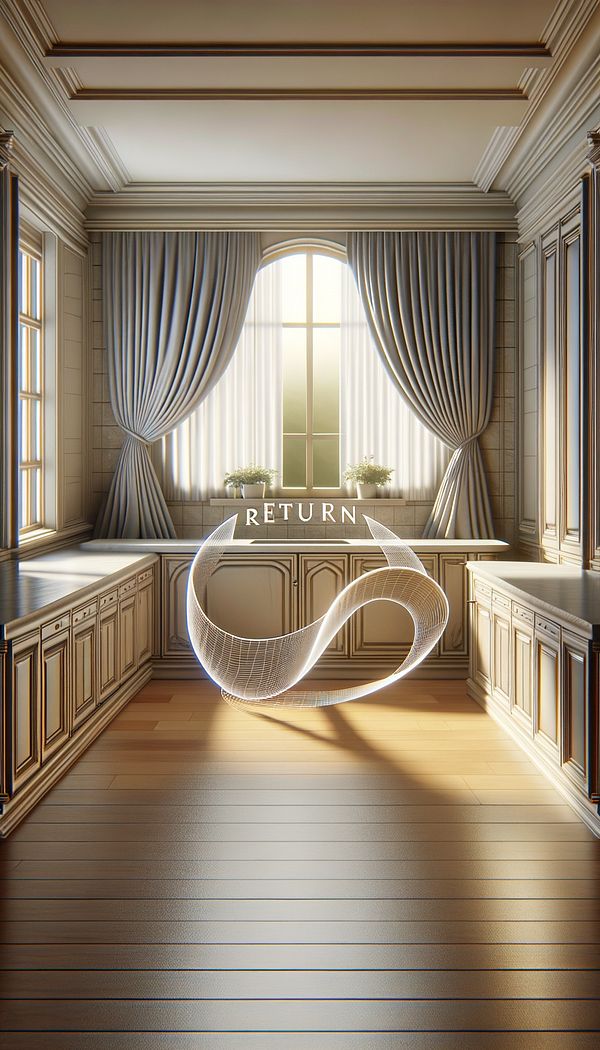What is Return?
In interior design, return refers to a detail where a material or element wraps around a corner or edge, creating a continuous look.
Description
In the realm of interior design, the term 'return' has a specific and quite impactful meaning. It is akin to putting the finishing touches on a masterpiece; it's where a material, be it fabric, wood, metal, or any other, extends or 'returns' around a corner, edge, or other termination point. This design technique ensures a cohesive and continuous appearance, making elements seem more integrated and refined.
This attention to detail can elevate the aesthetics of a space, proving that sometimes it's the little nuances that make all the difference. Returns can be seen in various applications, such as where a curtain rod wraps around the side of a window to block out light more effectively, or when the edge of a countertop material carries over to the side, creating a seamless transition.
Implementing a return not only enhances the visual appeal but also often serves a functional purpose. For example, in the case of a curtain rod, it improves light control, while in cabinetry or countertops, it can protect against sharp edges and enhance durability. It's a testament to the principle that design is a meticulous art that marries form and function effortlessly.
Usage
Common applications of 'return' in interior design include the wrap-around detail on curtain rods, the continuous edge of countertops, and the extended finish on cabinetry. It's also seen in flooring transitions, where the material 'returns' against a wall, providing a polished look.
FAQs
-
How does a return contribute to the aesthetics of a room?
A return enhances the aesthetics of a room by creating a seamless, continuous look. This attention to detail makes the design appear more intentional and finished, contributing to the overall harmony and sophistication of the space.
-
Can a return be functional as well as aesthetic?
Yes, returns often serve both aesthetic and functional purposes. For example, a return on a curtain rod helps to block out light more effectively, while returns on cabinetry or countertops can protect against sharp edges and enhance durability.
-
Is it necessary to include a return in every design element?
Including a return is not necessary for every design element, but it's a detail that can significantly elevate the look and functionality of a space when applied thoughtfully.
Practical Application
To effectively apply the concept of a return in your design projects, consider the overall aesthetic and functional goals of the space. Look for opportunities where extending a material or finish around a corner or edge could enhance cohesion or provide a practical benefit. Work closely with contractors or fabricators to ensure precise measurements and execution for a polished result.
-
Architectural Elements199 articles
-
Furniture Types599 articles
-
Decorative Techniques322 articles
-
Textiles & Upholstery252 articles
-
Flooring & Carpets48 articles
-
BoucléBouclé is a textured fabric known for its looped or curled ply yarns creating a unique and tactile experience.
-
English RegencyEnglish Regency is a design style that emerged in the early 19th century, characterized by its refinement, elegance, and incorporation of elements from ancient Greek and Roman architecture.
-
PilasterA pilaster is a rectangular column that projects partially from the wall to which it is attached.
-
AsymmetricalAsymmetrical refers to a design that is not symmetrical, exhibiting balance through differing elements.
-
Cast Iron FurnitureCast iron furniture refers to items of furniture made primarily from cast iron, a type of iron that has been melted, poured into molds, and allowed to solidify.
